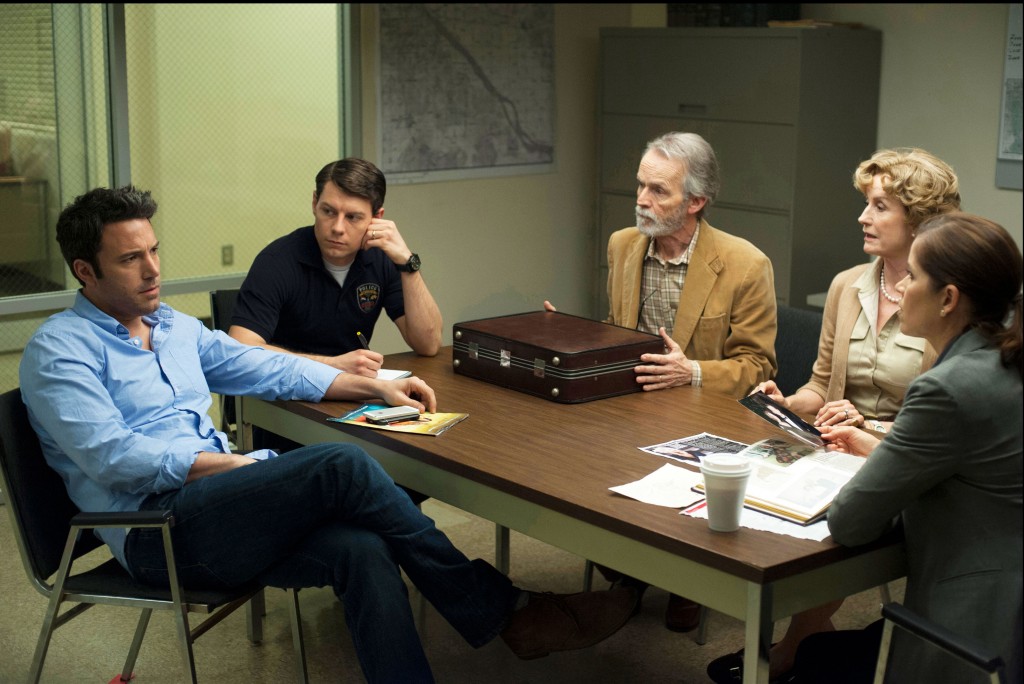
After a lukewarm summer of movies, director David Fincher’s coiled thriller, “Gone Girl,” marks one of the first big releases of the fall movie season. And like a Hallmark autumn day, Fincher supplies audiences with his signature cool air, crisp cinematography, carried by sharp performances from Rosamund Pike, Ben Affleck, Tyler Perry and Neil Patrick Harris, to name just a few.
The film revolves around the supposed disappearance and possible murder of Amy Elliott Dunne (Pike) – a woman who, as a girl, inspired a famous series of children’s books – on the morning of her fifth wedding anniversary. Her husband, Nick Dunne (Affleck) is the prime suspect, with new information and “clues” constantly coming to light.
If you don’t want the plot spoiled, stop reading now and go see the movie. After the movie reveals that Nick has more than enough of a motive to murder his seemingly perfect wife — namely, a much younger mistress (Emily Ratajkowski), and a boatload of life insurance to cash in — we learn that Amy is actually alive. Alive and well on her way to ruining her husband’s life, one brilliantly calculated setup at a time. (I’ll leave the details for those of you who enjoy surprises.)
While it does possess all the key-makings of any great film–an A-list lead, dynamic supporting stars, strategic cinematography and an intelligent script–“Gone Girl” lacks something. It doesn’t jump off the screen in the way that one anticipates a critically acclaimed film would. For starters, the film is pegged as a cerebral mystery or thriller. However, besides during the first hour, the only mystery left to solve is not who kidnapped Amy Dunne, but what Amy herself plans to do with the story she’s weaved. When the movie changes its scope, the audience detaches itself from the “main” story at hand and goes into secondary plots. No one ever watched a Hitchcock film expecting the perpetrator — or lack thereof — to be revealed less than halfway through. That just didn’t happen.
Amy, in spite of, or rather because of her abhorrent traits, remains the standout character — rare for a “victim.” Her ability to charm reached not only those who knew her, but those viewing the film. Then again, it’s easy to root for the emotional underdog, before said underdog is revealed to be a crazy murderer. (RIP Harris’ creepily charming character whose throat is slit with a box cutter. In bed.) Despite fitting the bill of sickeningly flawless women across the globe, Pike’s acting appears a bit stilted and fragmented, similar to the composition of the film itself. On the other hand, this particularly stoic demeanor lends itself to making the viewer question whether Amy is truly a reliable secondary narrator and therefore has the potential to completely alter the plotline.
Gillian Flynn, who penned both the novel and the screenplay, seems to have created a cleverly masked 21st-century version of Daphne du Maurier’s “Rebecca” — a novel where the titular character meticulously calculates her begrudging husband’s actions to ascertain when and how he would murder her. He obliged, to a tee. Similarly to Amy, she wanted to “win” the marriage and put her husband away for good. Though, unlike Rebecca, Amy had real motive. Her husband was a lying, lazy, inattentive and unfaithful piece of work. Both women, though, were wealthy, tall, thin, beautiful and inordinately psychopathic. Suffice it to say, Amy Dunne is the one person who could scare Satan.


